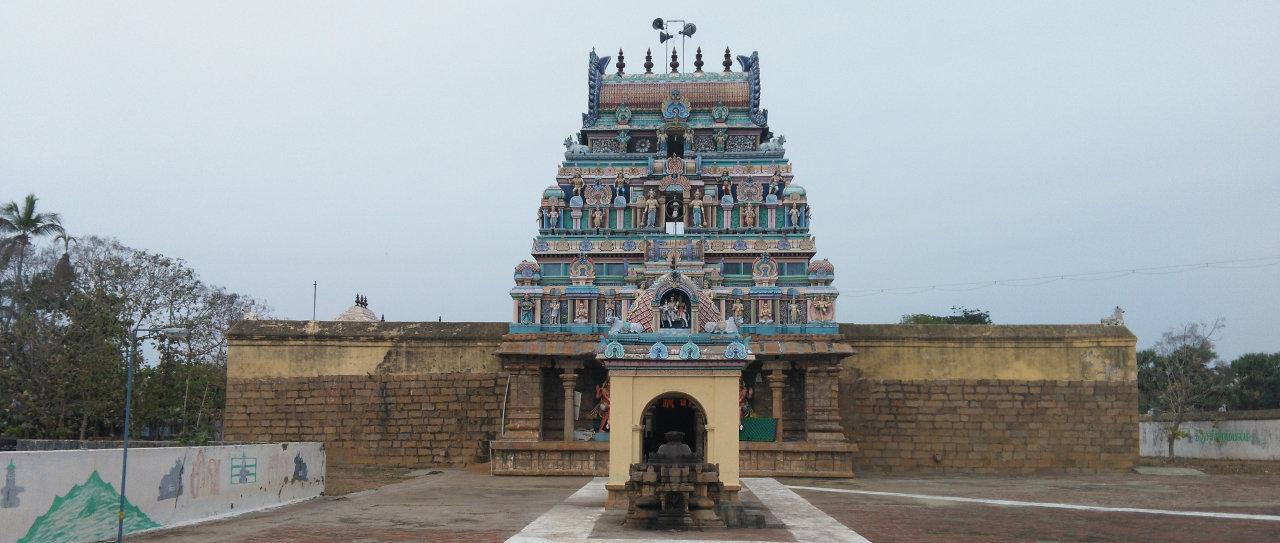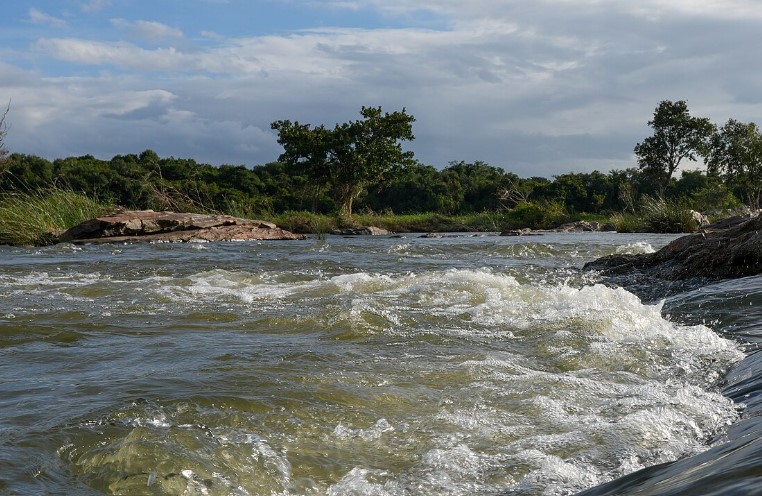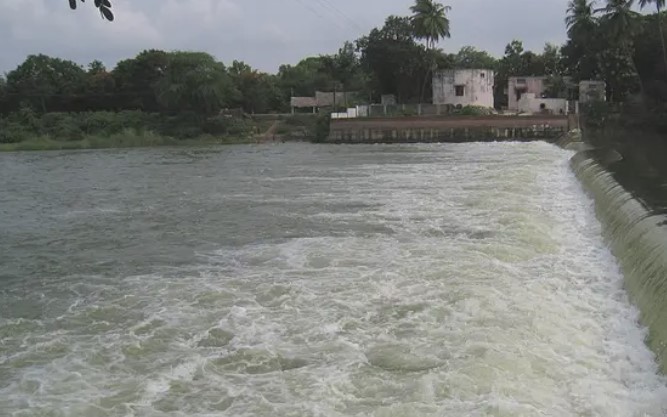- Brahmapureeswarar Temple, located in Thirumayanam (formerly Kadavur Mayanam) near Karaikal in Tharangambadi Taluk, Mayiladuthurai District, Tamil Nadu, is a significant Hindu shrine dedicated to Lord Shiva. It is one of the 276 Devara Paadal Petra Shiva Sthalams and the 165th overall in this revered list, specifically recognized as the 48th Shiva Sthalam on the southern bank of the river Cauvery in Chozha Nadu.
- The presiding deity, Brahmapureeswarar, is a Swayambumurthi (self-manifested), and the temple is also celebrated for its association with the three saints—Saint Thirugnanasambanthar, Saint Thirunavukarasar (Appar), and Saint Sundaramurthy (Sundarar)—who have sung hymns (Pathigams) in its honour. This temple is part of the 44 Paadal Petra Sthalams where these saints have rendered their devotion.
- Architecturally, Brahmapureeswarar Temple is one of the 55 west-facing Shiva Sthalams in Tamil Nadu. Notably, it lacks a main tower (Rajagopuram) but features a three-tiered secondary tower and two corridors. The most recent consecration ceremony (Kumbabishekam) took place on September 10, 2014.
- The temple is also recognized as one of the Pancha Mayana Kshetrams, adding to its spiritual significance. The goddess worshipped here is Malarkuzhal Minnammai, also known by other names such as Amala Gujambigai and Vaadamulai Ammai.
History of the Temple
- As per Hindu mythology, Lord Shiva destroyed and created Lord Brahma five times at five different places. Each such incident took place at an interval of “one karbam”. One karbam consists of hundreds of thousands of years. These 5 places are known as “Mayaanam” (“Mayaanam” means burial ground in Tamil). They are - Kasi Mayaanam, Kachchi Mayaanam (Kanchipuram), Thirukkadavur Mayaanam, Kazhi Mayaanam (Sirkazhi) and Veezhi Naalur Mayaanam. Since this place is very near to Thirukkadavur, this Mayaanam gets the name “Thirukkadavur Mayaanam”.
- The historical names of this place are Brahmapuri, Vilvaranyam, Siva Vedapuyri and Thirumeignanam.
PURANIC SIGNIFICANCE 1:
Origin of Mayaanam
In this sacred place, it is believed that Lord Shiva first burned Lord Brahma and then remade him as holy water, leading to the name "Mayaanam." As the creator god in Hinduism, Brahma's death halted the process of creation. The celestial gods approached Lord Shiva, requesting the reinstatement of Brahma, which he granted. This is considered the third occurrence of Mayaanam, where Lord Shiva also imparted the knowledge of “Shiva Gnanam” to Brahma, thus the name “Thiru Meignanam.”
The Sacred Well and Brahma Theertham
Another legend speaks of Lord Shiva creating a well with Ganges water for Sage Markandeya to perform his pooja. This well is adjacent to the temple’s holy water, known as “Brahma Theertham.” The water from this well is exclusively used for the daily ablution (abhishekam) of Sri Amirthakateswarar at the Thirukadaiyur temple, with no other deity using this water.
The Crack on the Lingam
A tale recounts that a king attempted to use the well’s water for an abhishekam for Lord Brahmapureeswarar. Upon pouring the water on the lingam, a crack appeared, which remains visible to this day.
The Legend of King Emakeridan
The story of Chalukya King Emakeridan is notable. After being defeated and exiled, he prayed to Lord Shiva across various temples. Upon reaching this temple, he prayed to Lord Singaravelar (Murugan) for help. Murugan is believed to have taken the form of the king and, with an army, defeated the enemy king, allowing Emakeridan to reclaim his throne. The king then donated 53 acres of land to the temple, which continues to be known as “Singaraveli.”
Other Legends
According to the “Sthala Puranam,” additional legends include:
- A Chola king was cured of leprosy after praying at the temple.
- Vedic scholar Somadevasarma relieved of his “Brahmahathi dosham” through worship.
- A brahmin named Sivasarma from Pandiya Nadu, who was transformed into a crow due to a curse, obtained salvation at this temple.
The Theerthavari Festival
It is believed that the Ganges visits the temple’s holy water on the Aswini star day in the Tamil month of Panguni. Every year, on this day, a grand celebration known as “Theerthavari” is held, featuring the procession of idols of Lord Shiva and Goddess Parvathy to the well.
PURANIC SIGNIFICANCES 2:
Pancha Mayana Kshetrams:
As per legend, Lord Shiva is believed to have burnt Lord Brahma here and then converted him in to a holy water. As Lord Brahma was burnt here, the place came to be called as Mayanam (Cremation ground). The process of creation came to a standstill because of the death of Lord Brahma. All the deities came to this place, performed intense penance and worshipped Lord Shiva. They all appealed to Lord Shiva to reinstate Lord Brahma.
Pleased with their devotion, Lord Shiva revived Lord Brahma and bestowed upon him the duty of creation. After the revival of Lord Brahma, Lord Shiva taught him the Shiva Gnanam here. Hence, the place is also called as Thiru Meignanam. The place where Lord Shiva burnt Lord Brahma and revived him back is called Mayanams. It is said that Lord Shiva destroyed and created Lord Brahma five times at five different places.
These incidents are said to have happened at an interval of one Karbam. One Karbam consists of billions of years. The five places where the above incident happened are collectively called as Pancha Mayana Kshetrams. They are;
1. Kachi Mayanam (Kanchipuram)
2. Kadavur Mayanam (Thirukadaiyur)
3. Kazhi Mayanam (Sirkazhi)
4. Veezhi Mayanam (Thiruveezhimizhalai)
5. Naalur Mayanam (Thirunaalur)
Brahma Theertham:
- As per legend, Sage Markandeya visited Thirukadaiyur and wanted to perform abhishekam to Amirtha Kadeswarar with the waters from Ganga river. To realise his wish, he prayed to Lord Shiva sincerely. Pleased with his prayers, Lord Shiva created Brahma Theertham with Ganga water on the southern side of this temple. The water from this well is exclusively used for the abhishekam of Amirtha Kadeswarar from that time onwards.
- It is said that no other water is being used for abhishekam of Amirtha Kadeswarar. Also, water from this well is not used for other deities. Once, a king named Bahuleya performed abhishekam to Brahmapureeswarar with the water from this theertham. It immediately caused a crack on top of the Lingam and can be seen still on the Lingam.
- It is believed that Ganga river in the form of theertham was brought for Markandeya by Lord Shiva on Ashwini star day in the Tamil month of Panguni (Mar-Apr). Hence, the theertham is also called as Ashwini Theertham. To commemorate this event, procession idols of Lord Shiva and Goddess Parvathy are taken to this theertham on this day every year and a Theerthavari is celebrated in a grand fashion.
Singaraveli:
- As per legend, a Chalukya King named Emakeridan was defeated by a king in a battle and was driven out of his country. He was an ardent devotee of Lord Shiva. He went on pilgrimage to several Shiva temples and sought the blessings of Lord Shiva. Finally, he came here, prayed to Lord Singaravelan of this temple and sought his help to get back his lost kingdom.
- Pleased with his prayers, Lord Murugan in the guise of the King, led his army to the battle and defeated his enemies. Lord Murugan informed them about the outcome of the war and sent back the king to take control of his country. In gratitude, Emakeridan donated huge swathes of land to Singaravelan. The land donated by him in honour of Singaravelan is called as Singaraveli.
Chola King got cured of leprosy here:
Once, a Chola King was afflicted with leprosy. He came here, worshipped Lord Shiva and got cured of his ailment.
A brahmin got relief from Brahmmahathi dosham here:
Once, a brahmin named Somadeva Sharma was afflicted with Brahmmahathi dosham. He was relieved of the dosham by worshipping Lord Shiva here.
Shiva Sharma got relief from his curse here:
Once, a brahmin named Shiva Sharma was cursed to become a crow due to his misdeeds. The crow came here, worshipped Lord Shiva and regained his human form. Later, he attained salvation here.
Pranava Vinayaga:
As per legend, when Shiva was teaching the meaning of Pranava to Lord Brahma here, Lord Ganesha was also present listening to the teachings of Lord Shiva like an obedient student. Hence, he came to be called as Pranava Vinayaga.
Pampatti Siddhar:
It is believed that Pampatti Siddhar, one of the renowned 18 Siddhars of Tamil tradition is said to have lived in this place.
Other Names:
This place was also called as Brahmapuri, Vilvaranyam, Kadavur Mayanam, Brahmapuram, Shivavedapuri and Thirumeignanam.
People worshipped Lord Shiva here:
It is believed that Lord Brahma, Sage Markandeya, Vinayaga, Pampatti Siddhar, Chalukya King Emakeridan, Kulothunga Chola III, Somadeva Sharma, Shiva Sharma and other deities had worshipped Lord Shiva here.
ADMINISTRATION:
The Sri Brahmapureeswarar Temple in Mayiladuthurai is administered by the Hindu Religious and Charitable Endowments (HR&CE) Department of the Government of Tamil Nadu.


